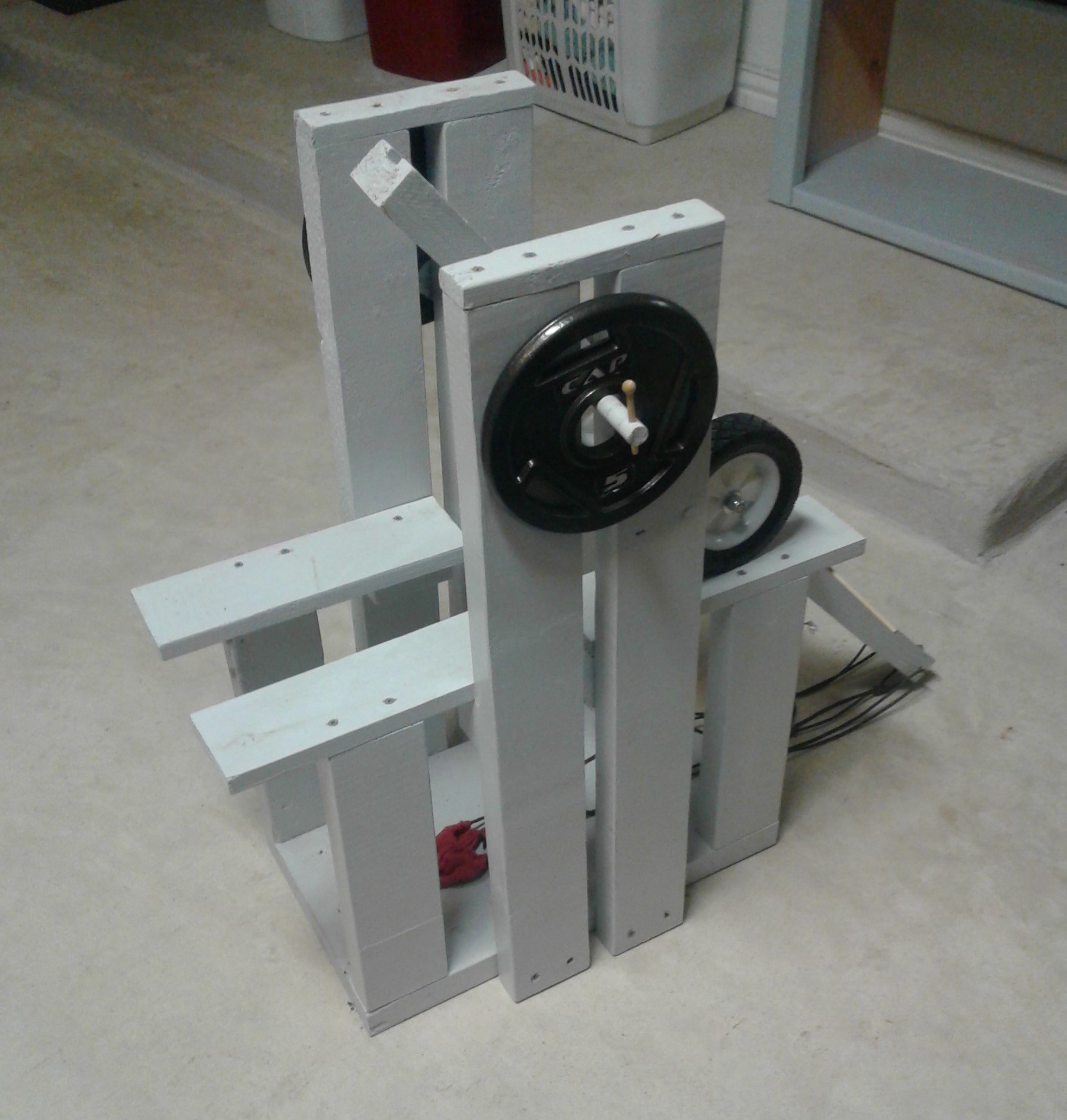Maker Projects
Trebuchets
Background
Trebuchets are medieval war machines used to throw heavy payloads. They utilize the transfer of gravitational potential energy from a counterweight to propel the arm (lever), often employing a pouch attached to string (sling) at the end of the arm to maximize the distance. Trebuchets are frequently confused with catapults, which use tension and torque to launch projectiles. Trebuchets are superior siege machines.
Design Process
My first experience with trebuchet occurred in my senior physics class. We were challenged to make a working trebuchet in teams that met the following requirements:
- No pre-fabricated components, must be an original creation
- Maximum joint height of 1.00 meters, bracketing width of 0.41 meters, base length of 1.22 meters
- Composed of either wood or PVC
- Must employ a sling
- Must be powered solely by gravitational potential energy (GPE)
- Maximum weight employed must not exceed 96N
- Total cost must not exceed $45.0
As a team we chose to make a floating arm trebuchet. These utilize a linear drop of the counterweight that is more efficient in transferring potential energy to kinetic energy than the pendulum counterweight motion of a traditional trebuchet. A traditional trebuchet, which is more simple to engineer, consists of an arm resting on an axle with a counterweight. The floating arm trebuchet loses its advantage over a traditional trebuchet at very large scales because of the difficulty in constructing the drop channel and axle at larger sizes.

|
Materials and Tools: |
|---|---|
.jpg)
|
Build the frame and track. I made a wood frame, building from a wide base (see diagram). The top wood pieces will be used as a track for the wheels. The space between these should be wide enough for the arm, but narrow enough for the wheels to run down. There is also a gap in the middle of each track for the counterweight. This gap should be large enough for the dowel rod (used as an axle for the counterweight) to pass through, but small enough for the wheels to easily glide over. It is important that these pieces are aligned well. |
.jpg)
|
Build the drop channel. The vertical drop channel is attached to the exterior of the base (see diagram, in blue). The space between the channels should be equivalent to the gap between the tracks (slightly larger than the diameter of the dowel rod). The higher the drop channel, the more gravitational potential energy produced. However, a larger height also puts more strain on the counterwieght mechanism and arm. The efficiency of the machine is limited by points of friction. Friction along the drop channel, as well as other locations, can be reduced by using grease or thin plastic coating. |
.jpg)
|
Build the arm. The arm should be light, but strong enough to endure the strain placed on it by the counterweight. The length of the arm and the mass of the counterweight are the most significant factors affecting the range of the trebuchet. Extra reinforcement on the arm located at the counterweight can add strength and an additional mass (i.e. more counterweight). The counterweight will be suspended at the shorter end of the arm, and the sling/payload though be placed at the longer end. The wheels should be positioned using a ratio between the short arm length (LS) and long arm length (LL) that optimizes the range (see diagram). Additionally, the length between the counterweight and the wheels also play a factor in the range. Finding the most ideal lengths is the most challenging and educational aspects of the project. I invite you to research, experiment, and determine the best combination of values for you machine. |
.jpg)
|
Build the sling. The sling is composed of a pouch made of fabric, a release pin, and string. The payload is released from the pouch when an angle (θ) is reached, which depends on the angle of the pin (δ). This mechanism can be challenging to construct as it depends on the position of the pin and the length of the string. If the projectile is released from the sling too early,the trajectory will be too high. If the projectile is released too late the projectile will slam into the ground. The length of the string should be approximately the length of the long arm (LL). |
Reflection
As a science educator I want to make learning fun. Students frequently tell me that they don't like science - it's hard and boring. This bothers me, but I can relate to it. When I took my first introductory physics class, I hated physics! It was my junior (and senior) physics teacher who made me appreciate its beauty and fall in love with the subject.
STEM shouldn't deter students, it should be stimulating and interesting. Students want to learn - they are excited when they get to do something. Making the trebuchet for our senior capstone project was one of my favorite memories in high school. I'll always remember and value the time I spent with my team designing, building, and testing our trebuchet (see the video in the background section). We worked through many trials and errors, struggled but perservered through one of the most difficult projects I had encountered. I don't remember a face that wasn't smiling as our class launched our siege machines on our high school football field. These are the experiences teachers should be creating for students.